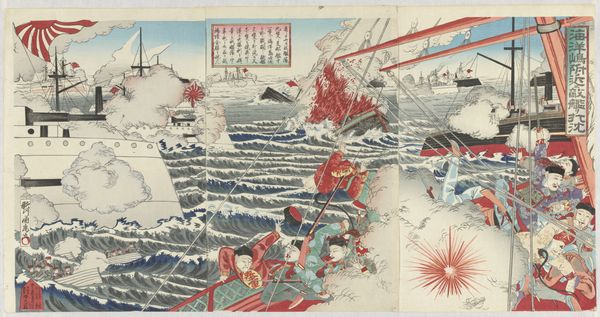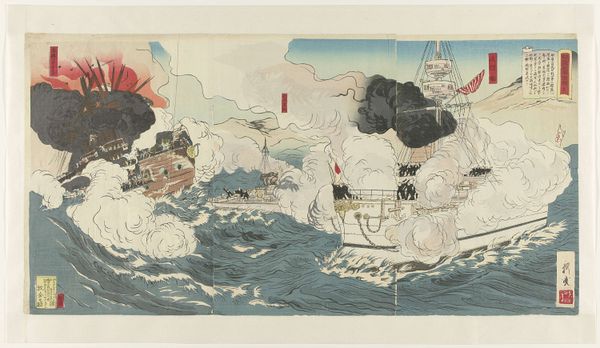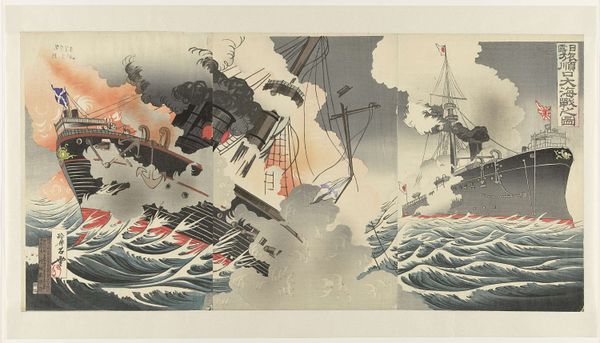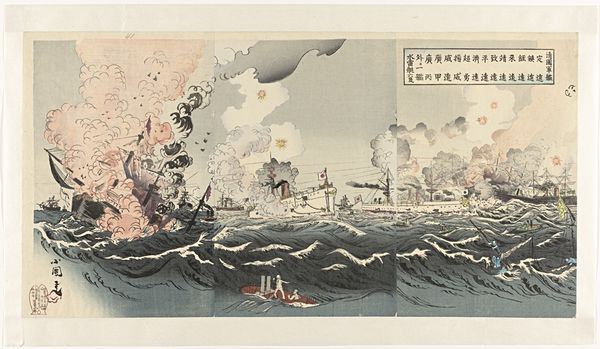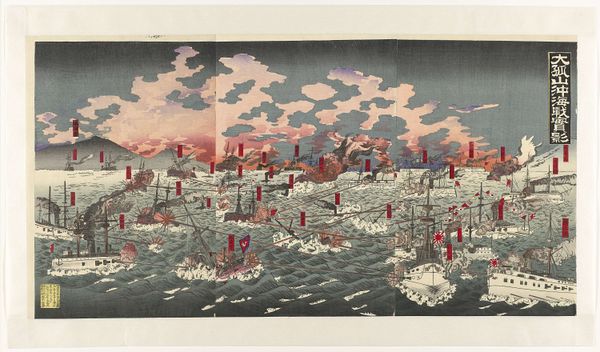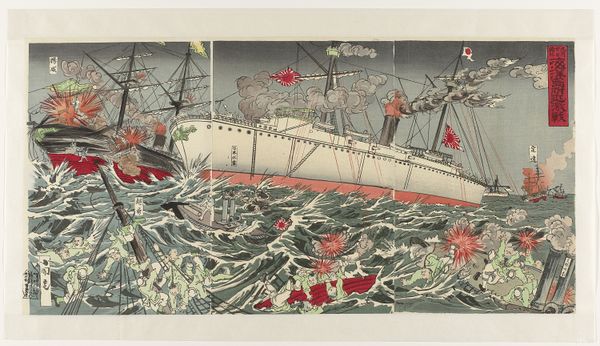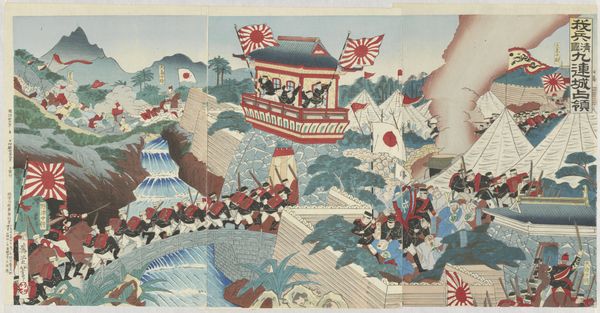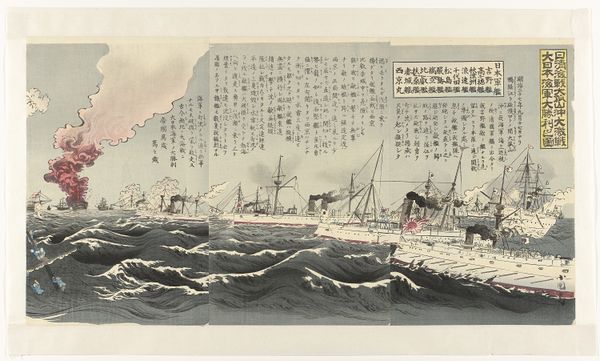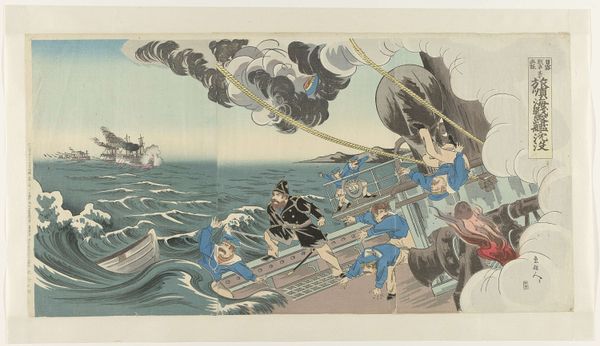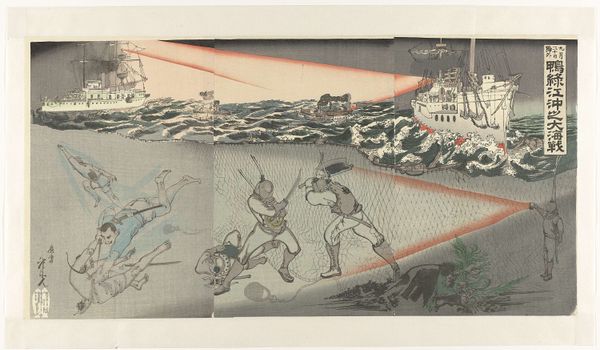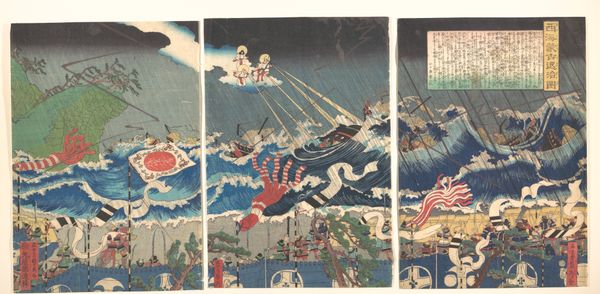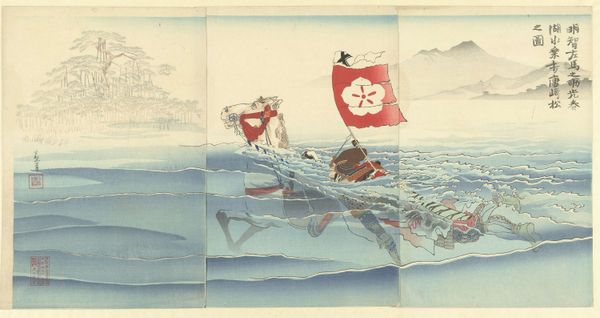
Copyright: Rijks Museum: Open Domain
Editor: So, this color woodblock print, “Grote overwinning van het keizerrijk in de zeeslag met China” or “Great Victory of the Empire in the Naval Battle with China,” was created by Utagawa Kunihide around 1894. It's incredibly dynamic! I’m struck by how it glorifies this battle, depicting such chaotic violence almost triumphantly. What exactly do you see happening here from a historical perspective? Curator: The print is, as you observed, highly propagandistic. It depicts a naval battle during the First Sino-Japanese War, but through a heavily biased lens. The “victory” isn’t just a military event; it’s a constructed narrative designed to bolster Japanese nationalism and legitimize imperial ambitions. The glorification you noted is deliberate. Notice how the Japanese ships are pristine, projecting strength, while the Chinese vessels are in ruins? Editor: Yes, the contrast is stark. So, this wasn't necessarily a realistic portrayal of the battle? Curator: Realism wasn’t the aim. These prints, widely circulated, served as potent tools for shaping public opinion and celebrating military prowess. Think about the power of imagery in fostering national identity – especially the carefully managed image presented in mass media like these prints. Who do you think this was targeting, and why is it important that it was made via color woodblock? Editor: Hmm, I'd guess these prints aimed at ordinary Japanese citizens? Since the prints are cheap and could be mass-produced, many people could be exposed to these ideas about the war. Curator: Precisely! The choice of woodblock print, a readily accessible medium, highlights how the state, even through artistic depictions, was crafting a collective narrative. It also plays into the Japonisme movement—Westerners were captivated by Japanese prints, potentially bolstering Japan's image abroad. Did this change your impression of this print at all? Editor: Definitely! I now realize its propagandistic purpose. Seeing it within its historical and social context makes the "triumphant" depiction so much more loaded and interesting than if it were simply about recording the event itself. Curator: Exactly! Understanding the interplay between art and socio-political forces reveals a complex network of power, perception, and propaganda. It makes you question how contemporary imagery shapes our understanding of conflicts today, doesn't it?
Comments
No comments
Be the first to comment and join the conversation on the ultimate creative platform.
